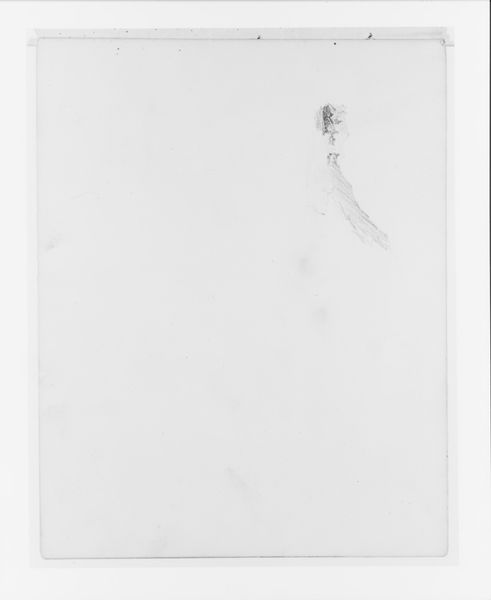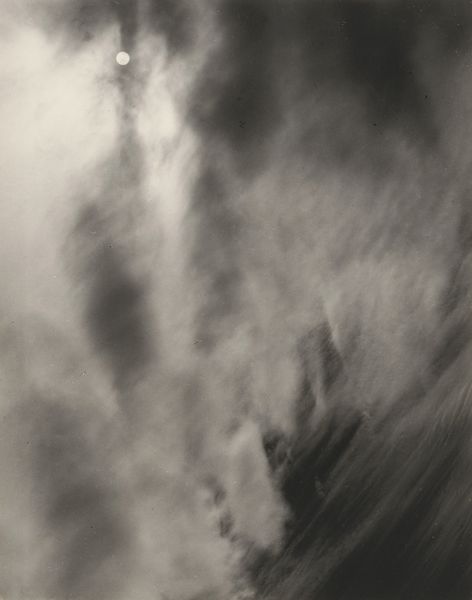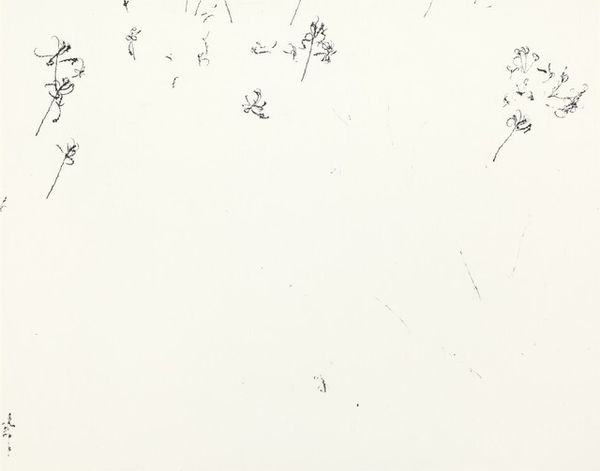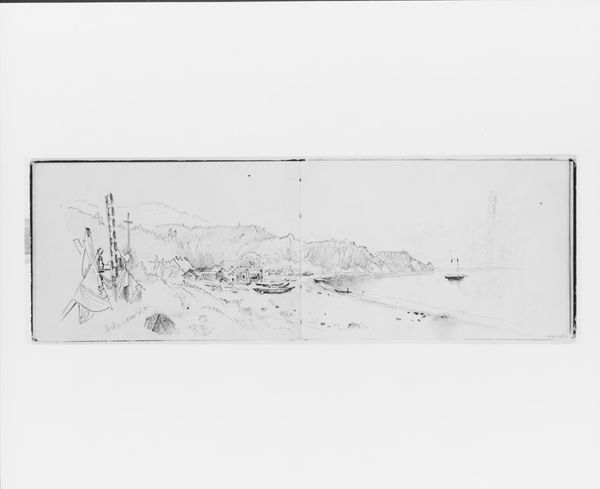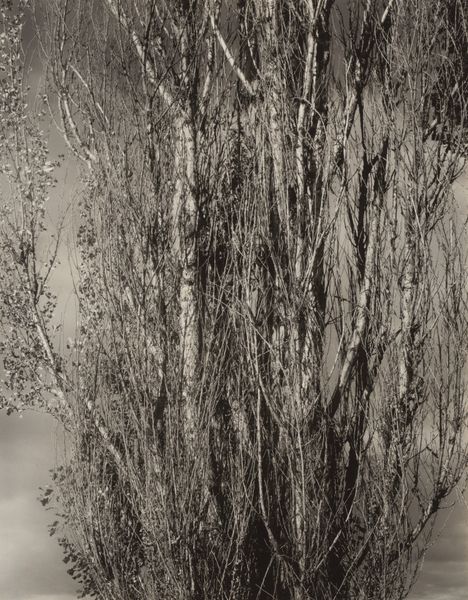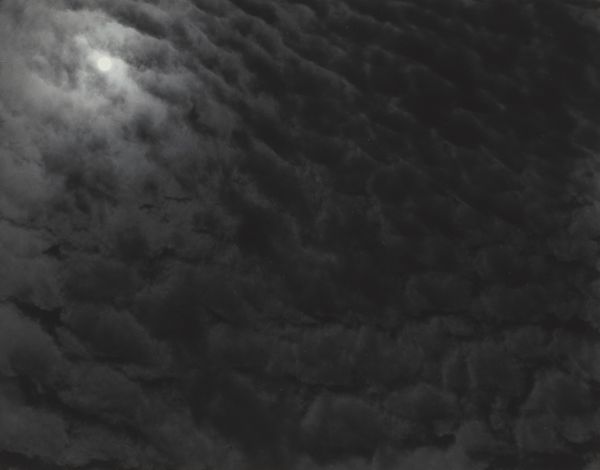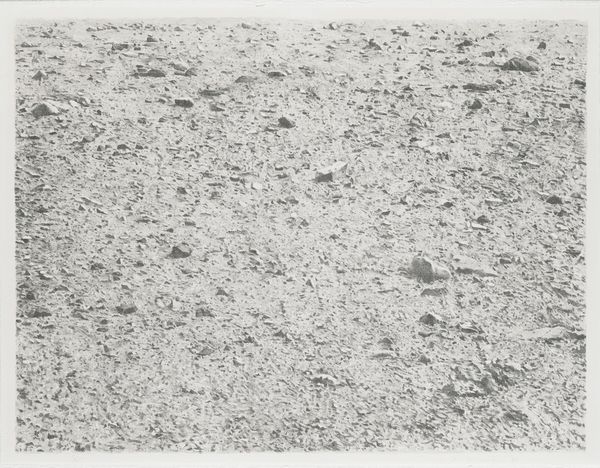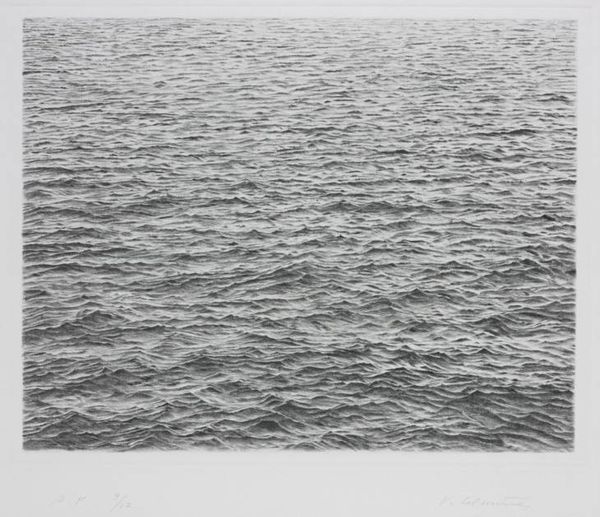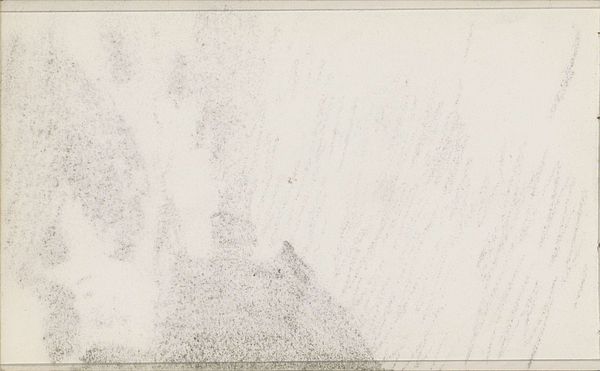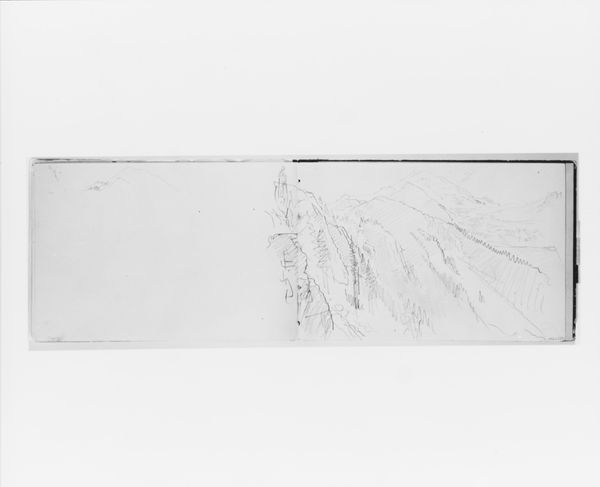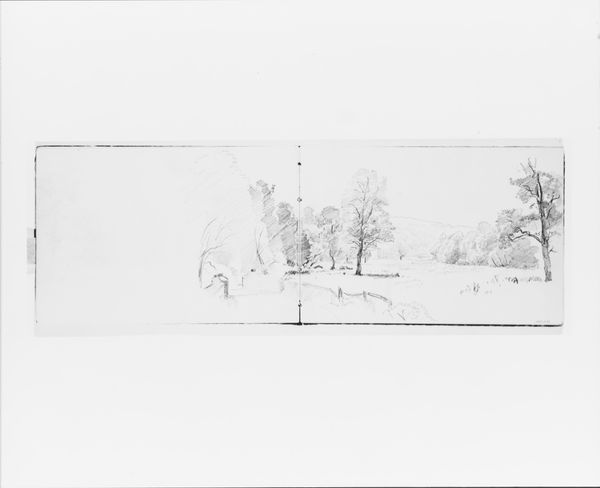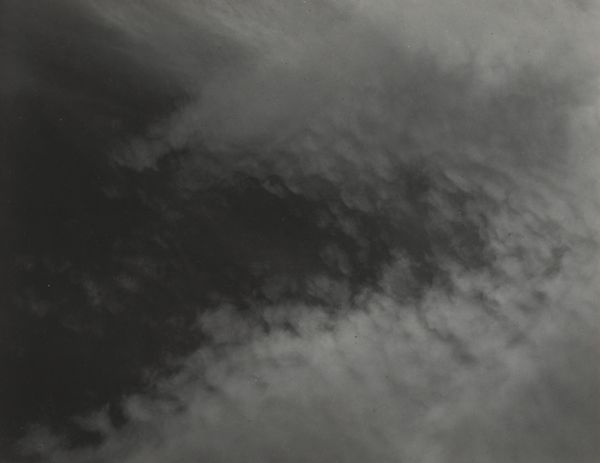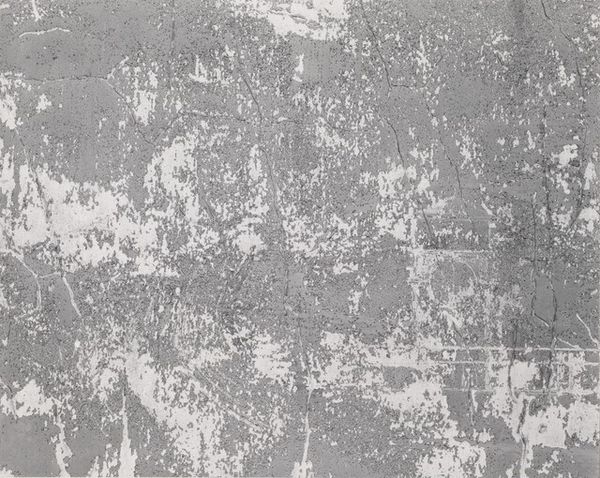
Landscape and Coastal Study (from Sketchbook) 1834 - 1838
0:00
0:00
drawing, pencil
#
organic
#
drawing
#
organic
#
landscape
#
form
#
romanticism
#
pencil
#
line
Dimensions: 7 1/4 x 9 in. (18.4 x 22.9 cm)
Copyright: Public Domain
Curator: Standing before us is John William Casilear’s "Landscape and Coastal Study," a pencil drawing created sometime between 1834 and 1838. It's part of a sketchbook now housed at the Metropolitan Museum of Art. Editor: It's deceptively simple, isn't it? Almost ethereal. The wispy pencil lines barely contain the forms, giving the landscape a fragile, dreamlike quality. Curator: Casilear was deeply influenced by the Hudson River School, and although this is just a sketch, we can see the seeds of their Romantic vision of the American landscape. But this, I believe, pushes back at that, due to its more minimal, form-based sketch. Editor: Right, you see that influence. I’m struck by the power of suggestion here. How the lightest touch of the pencil evokes a sense of vastness. Considering Romanticism often reflected ideas around individualism and nation building, who were the perceived and targeted viewers of this study, and how would they contextualize what is only barely pictured? Curator: Good question. Consider how the National Academy, in shaping artistic tastes and providing exhibition platforms, dictated access. It inevitably skewed toward privileged, often white, audiences who benefited from land expansion at the cost of Indigenous populations and the exploitation of enslaved peoples. Editor: Absolutely, we can't separate these landscapes from the political realities in which they were produced and viewed. So what might that limited audience think in 1834? That there are few constraints in what one could imagine for a space, based solely on lightly suggestive pencil strokes. And for the Indigenous and enslaved communities, would the picture ring different if they saw these drawings on display? Curator: Precisely. These landscapes, even as preliminary studies, reinforce the visual narratives that uphold a specific social and political order, both idealizing "untouched" wilderness, while disregarding the history of land occupation and injustices. The landscape, itself, has to be considered a participant in power structures. Editor: Looking at the delicate execution again, I find myself thinking about the implications of seeing something sketched as romantic and, alternatively, an appropriation by settlers in a historical vacuum. It definitely complicates any simple reading of natural beauty. Curator: I agree, that this piece offers such rich ground for thinking through the power dynamics inherent in even the most seemingly benign landscape. Editor: Indeed, a pencil sketch becomes a portal into understanding broader societal complexities that impact marginalized groups and the dynamics surrounding cultural and artistic expressions.
Comments
No comments
Be the first to comment and join the conversation on the ultimate creative platform.
